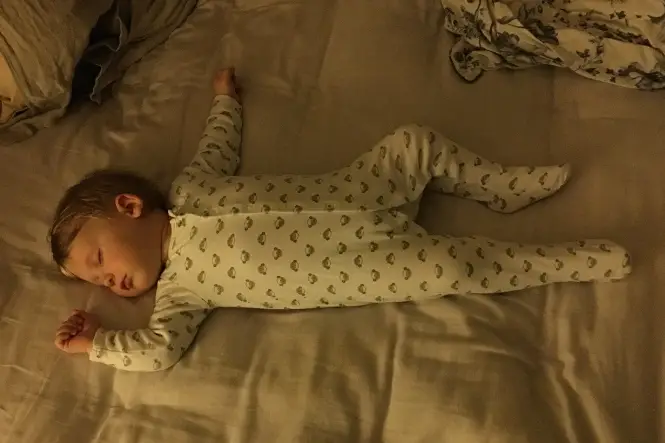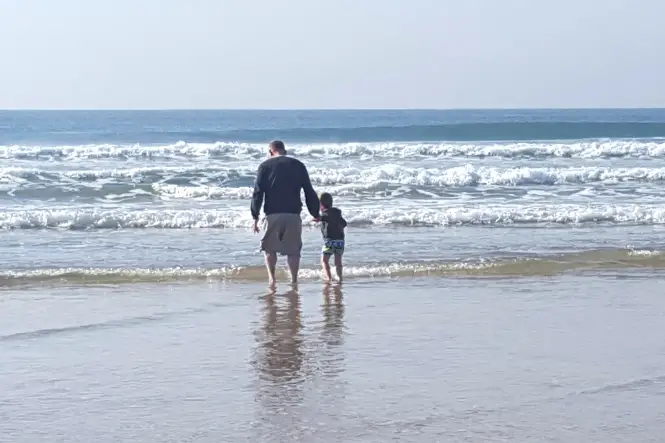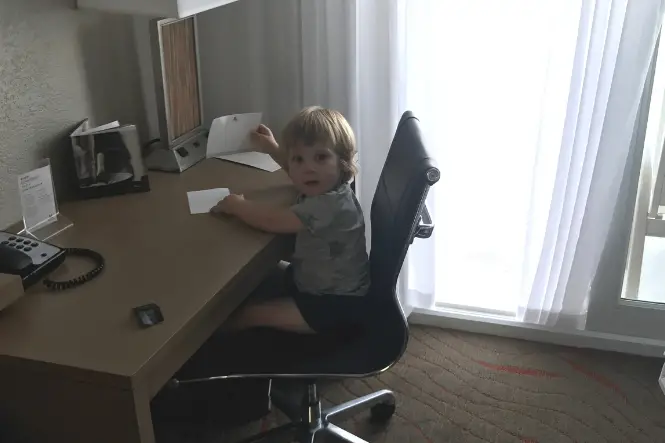Babies spend a huge amount of time asleep – or at least, in theory they do – so ensuring your baby is safe and sound while doing so is crucial. To help your baby sleep safely, you need to take into consideration aspects such as where he sleeps, how he sleeps, the bedding you use and what’s in the cot. Get your child started on a safe, secure sleeping pattern from birth, and both of you will reap the benefits.
Table of Contents
The Ideal Sleeping Position
When getting your baby to sleep, the best position is on their back. Babies settle easier on their backs if you’ve always put them to sleep this way, so try and do so from the start. Studies have shown that always putting babies to sleep on their backs greatly reduces the number of cot deaths each year, although nobody knows exactly why.
Of course, eventually babies will learn how to roll from their back to their front on their own. When this happens, continue to put them to sleep on their back, but don’t worry about them moving and leave them to find their own comfy position.
Sleeping In the Family Bed
Although many people used to sleep with their babies in their bed, experts now recommend against doing this. A study into the safety of bed sharing found that it could increase the risk of cot death, and in the case of babies aged less than eight weeks old, bed sharing increased the risk of cot death by 1.6%. It may still seem a small risk, but the safest place for your baby to sleep is in a cot.
If you do choose to sleep with your baby, observe a few safety rules. Never put a baby in the same bed with someone who has been drinking, is taking sedative medicines or is very tired. One study shows that the incidence of cot death also increases if an adult in the bed is a smoker. The type of bedcovers adults use can also play a role, as babies can easily suffocate. Don’t allow people to smoke in the same room where your baby sleeps.
Choosing the Right Bedding
Duvets and pillows aren’t safe to be used with babies under one year old, especially as they could cause overheating or accidentally cause smothering. Instead, use a sheet and blankets in the cot. This also makes it much easier to get the temperature right – if your baby is too hot, you can take a layer off, and if he’s too cold, you can add a blanket.
Also, ensure you have the right size bedding for the cot or crib, as this will prevent your baby getting tangled up. Don’t be tempted to fold up larger sheets or blankets to fit your crib, as it can be dangerous.
When you make up the cot, use the ‘feet to foot’ method. Place your baby so that his feet are at the end of the cot and the blankets and sheets are halfway down, and tucked under the mattress. This is a safe and recommended method, as it means that it’s difficult for your baby to wriggle down under the bedding. Choose a cot that complies with British Safety standards and that you know comes from a reputable supplier.
It’s also important to ensure your baby’s head is kept uncovered. This is because babies regulate their temperature by losing heat from their heads, so keep hats off when he’s in the cot.
Another option to consider is baby Grobags or specially designed sleeping bags. They’re ideal for babies who keep kicking off their blankets! Check the weight and size of the sleeping bag is right for your baby. For example, you could use a 1 tog in the summer and a 2.5 tog in the winter, and make sure it fits snugly around your baby’s chest.
Toys in the Cot
Although it’s great to have toys for your baby, it’s recommended that you don’t keep them in the cot when your baby is young, as they could easily fall on your baby’s head, causing overheating or accidental smothering. If you want your very young baby to have some sort of stimulation in their cot – although it really should be a place for boring sleep! – you can invest in a mobile to hang above the cot. Make sure it is a safety-approved one, in case it accidentally falls into the cot.
Reducing the Risk of Cot Death
Cot death, or Sudden Infant Death Syndrome (SIDS), is the leading cause of death in babies over one month old. Seven babies a week die from cot death in the UK alone and, although research is still ongoing into all the potential causes, there are practical ways you can reduce the risk.
General Cot and Moses Basket Safety Tips
To keep your baby safe and minimise the risk of cot death, follow this advice:
- Stop smoking during pregnancy, this includes fathers, too.
- Don’t let anyone smoke in the same room as your baby.
- Put your baby to sleep on his back.
- Don’t let your baby get too hot – the ideal temperature is 16-20º C. Use a thermometer to keep track of temperature in your baby’s room.
- Keep your baby’s head uncovered when he’s asleep.
- When you put your baby to sleep, place his feet at the foot of the cot, to prevent him wriggling down under the covers.
- For the first six months, have the cot in your bedroom, so you can keep a close eye on your baby when he’s asleep.
- Avoid sharing a bed with your baby.
- If your baby is unwell, or you’re worried about him, seek medical advice promptly
- Make sure that the bars in your baby’s cot are between 45 mm and 65 mm apart, to prevent the baby’s head being trapped in between them.

- Moses baskets are safe to use and you should follow the same sleeping advice for cots, keeping the basket in your room for the first six months.
- Don’t put the cot next to a heater, fire, radiator or in direct sunlight, as it could make your baby too hot.
- Breathing or apnoea monitors, which are designed to sound an alarm after 20 seconds if there’s no sign of breathing, can be used for reassurance, but there’s no evidence that they can prevent cot death.
- Research into cot bumpers has produced neutral results. On the positive side, they don’t have bad effects, so are considered safe to use in the cot. However, if they’ve got strings to attach them to the cot, they could be pulled by older babies. Some experts recommend avoiding using bumpers with babies who can sit unaided.
- Used mattresses have been linked to an increased risk of cot death. Ideally, buy a new mattress for each new baby, or ensure the one you have is completely waterproof and has no tears or holes. Ventilated mattresses with holes aren’t recommended, as it’s impossible to keep the inside clean.
- There’s no need to use waterproof sheets with your mattress.
Creating a Happy, Safe Bedroom
Ensuring that you have a safe and pleasant sleeping environment for your new baby is more than just choosing a cot. Make sure window blinds do not have strings or cords which could get tangled around the baby’s neck, and keep all toiletries and other supplies out of reach. New parents might feel more comfortable placing a changing mat on the floor, instead of using a changing table where he or she could roll off. Cabinets, shelves and other heavy furniture items need to be properly secured so they won’t fall over when tugged.
Babies sleep best when their room is kept between 16ºC and 20ºC, which is why buying a room thermometer is a good idea. Keep the cot away from radiators and never place a hot water bottle in a cot or use an electric blanket in one. If the weather is really warm, use an electric fan that is placed well out of your baby’s reach, and dress him or her in just a nappy.
When baby sleeps well, parents sleep well too. Do all you can to help your little one get enough hours of sleep every night by providing a safe, comfortable environment to sleep in, without distractions from the rest of the household and under the confines of a regular routine. You’ll find thata good sleep regimen can work wonders for everyone.




